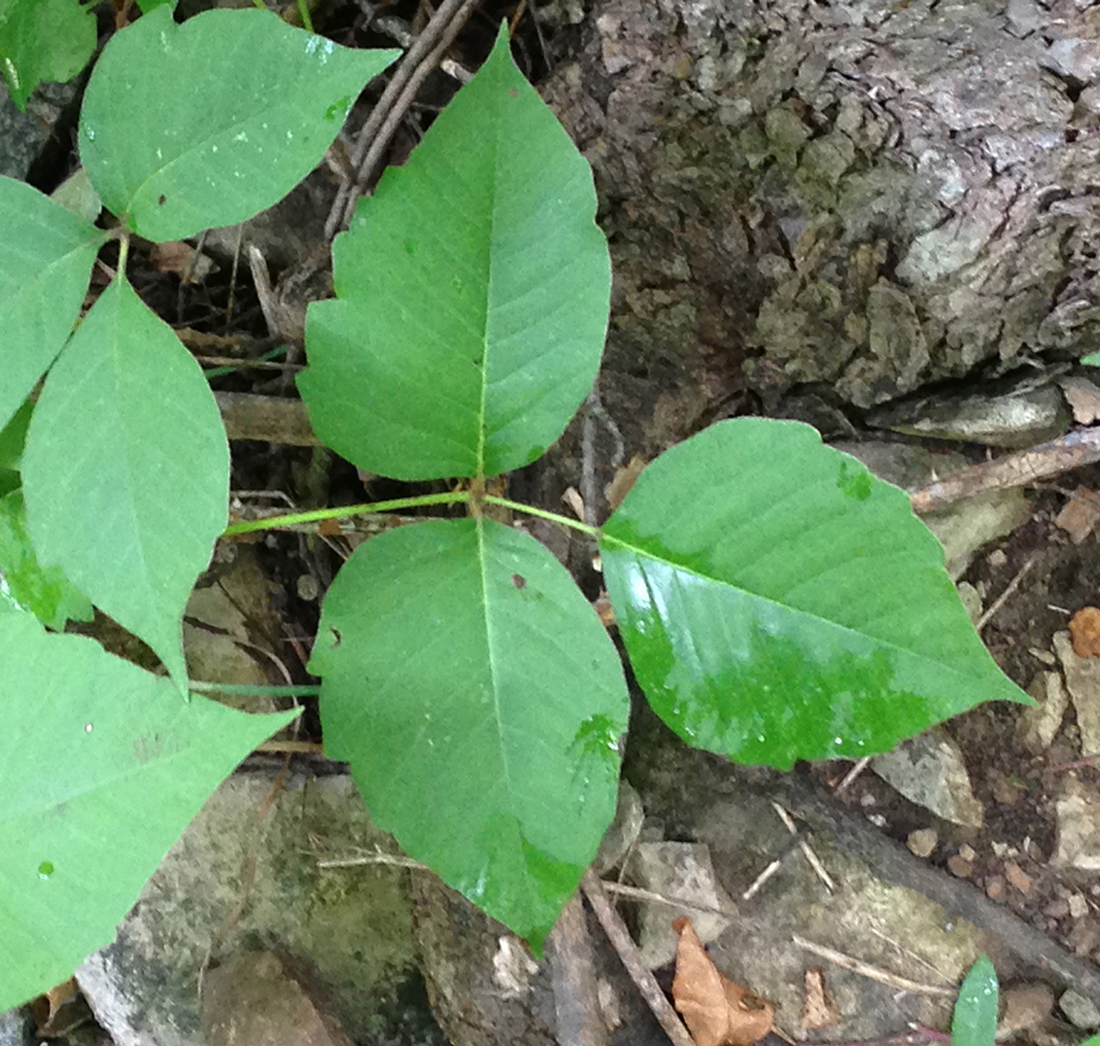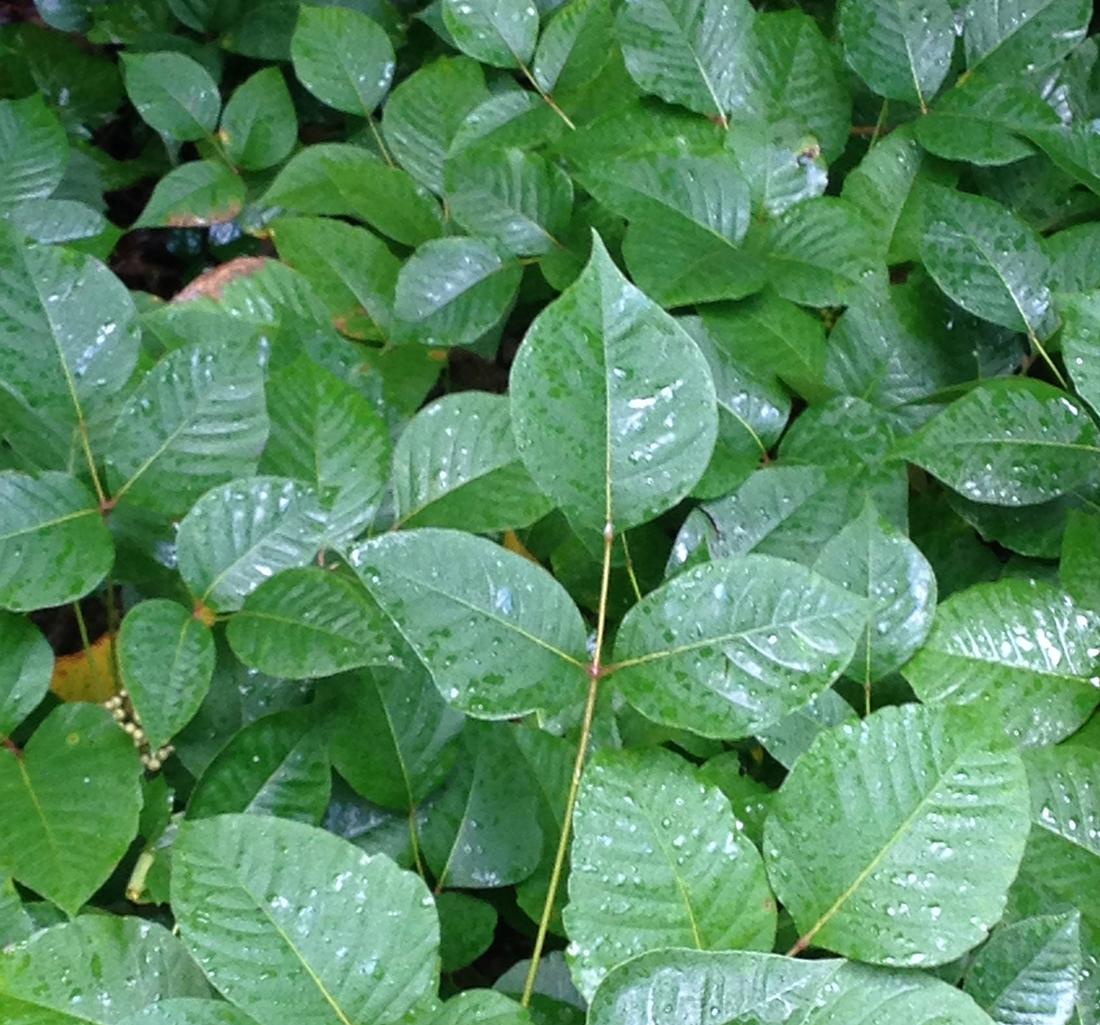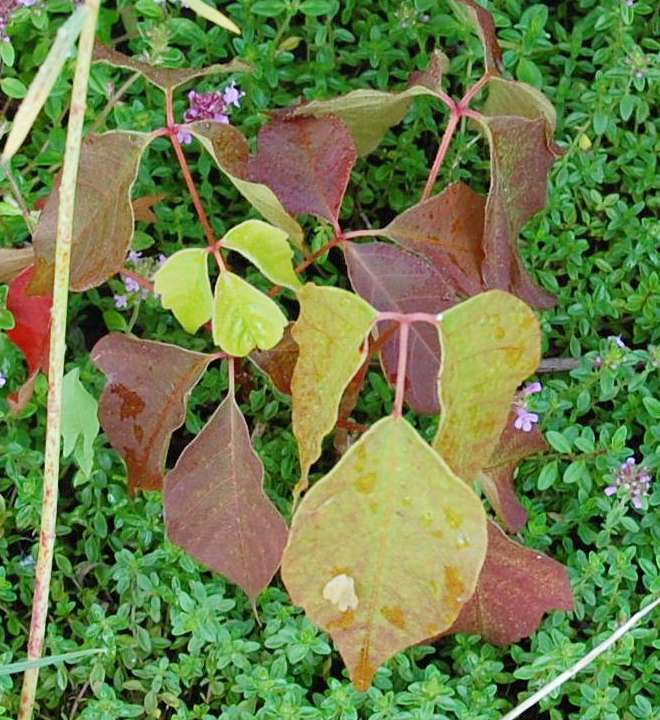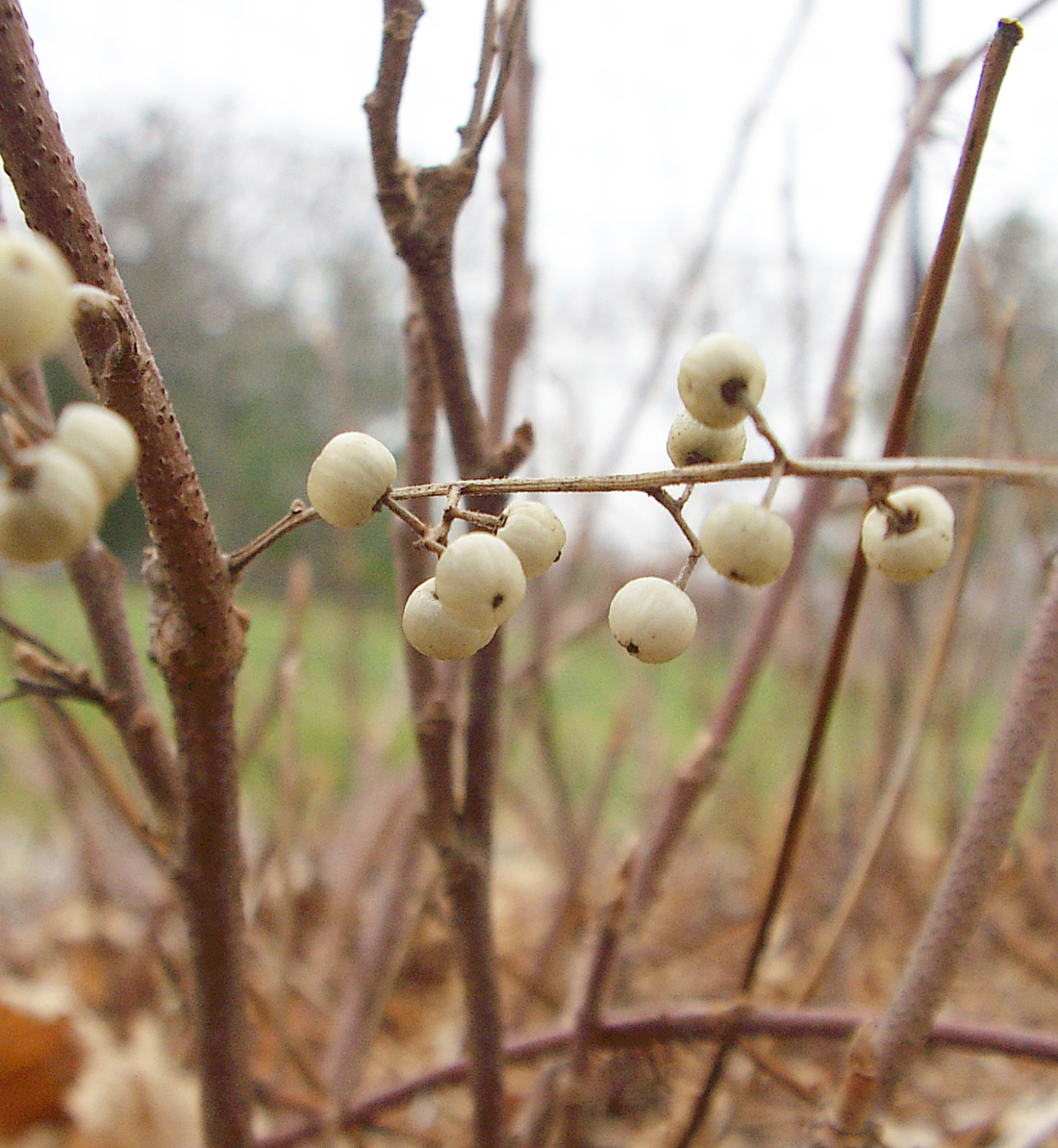Poison Ivy
Poisonous when touched (all parts are poisonous).
- Cashew family (Anacardiaceae family):
- Toxicodendron radicans (L.) Kuntze
- EPPO code:
- TOXRA
Species information
- Lifecycle:
- Perennial
- Propagation:
- Reproduces by seed and by woody rhizomes.
- Emergence:
- Poison ivy will begin to emerge as soon as the soil warms in spring. Shoots emerge from woody rhizomes.
- Habitat:
- The poisonous plant is most commonly found in and around woodlots, but it can also be found in waste areas, and along fence lines and roadsides.
- Competitiveness:
- Poison ivy is rarely found in agricultural crops; however, there is potential for the plant to establish in orchard crops. Concern of its existence would be dermatitis caused by contact with the plant’s oily allergen (urushiols).
Identification clues
- Stems:
- The stem of poison ivy is woody and grows in two ways. The most common variety grows horizontally along the ground with upright leafy stalks; the other variety is a climbing vine.
- Leaves:
- Everyone knows the “leaves of three, let them be” line, but there are a lot of plants with three leaflets. Focus less on the type of leaf margin and colour, as both vary depending on their environment and the time of year. For example, leaves are generally a copper or reddish colour in the early part of spring, but are bright green in the summer months. If we look at the three leaflets that make up the compound leaf, it is the middle leaflet that we should pay attention to. It exists on a much longer stalk (called a petiole) than the other two leaflets. The compound leaves of poison ivy are oriented alternately on the stem. Both the alternate leaf orientation and the long petiole on the middle leaflet distinguish poison ivy from other three-leaflet plants.
- Flowers:
- Poison ivy’s flowers are small and white or greenish with five petals in branching clusters that are often found hidden below its leaves. Flowers turn into whitish to dull greenish-yellow, round, berry-like fruit that contain one seed.
- Seeds:
- Its seed appears like two circles fused together. Seeds are less than 5mm and range from dark grey to dark brown in colour.
- Roots:
- Small fibrous roots attached to spreading woody rhizomes.
Often mistaken for
I know it's not Virginia creeper because the compound leaf of poison ivy contains three leaflets, whereas the compound leaf of Virginia creeper has five.
I know it's not Manitoba maple because older Manitoba maple leaves have five leaflets, while younger ones have three leaflets. While they are easily confused with poison ivy, they are oppositely oriented along the stem compared with the alternate leaf arrangement of poison ivy.




Updated: January 13, 2023
Published: January 13, 2023